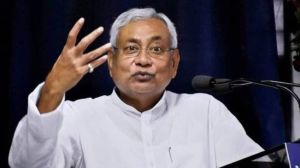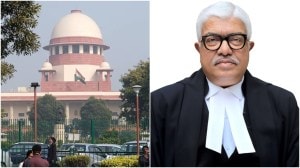With the Centre’s decision to withdraw Rs 500 and Rs 1,000 notes from circulation two weeks ago, people are trying to keep pace with the spate of policy changes that has followed since November 8, as the government attempts a delicate balance of rationing new currency on the one hand and making it available for sections of society on the other.
While the government eased caps on withdrawal from accounts, it tightened rules for exchange. The original cap of Rs 4,000 on exchange of old notes, which was to be reviewed after 15 days, was first raised to Rs 4,500 within five days. As the queues to exchange old currency kept getting longer, the government decided to use indelible ink used during elections to prevent people from multiple attempts exchange currency.

Watch What Else Is making News
But with the ink idea bearing little success, the finance ministry cut the note exchange limit to Rs 2,000 from Rs 4,500 just a day after select bank branches started using the ink. This adversely affected foreign tourists and citizens not having bank accounts.
Story continues below this ad
“The reduction in exchange limit to Rs 2,000 shouldn’t matter to people who have access to bank accounts. But for certain categories, exchange is important. People who are away from hometown, they must get a higher exchange provision. A higher limit should also be considered for foreigners as it is a huge problem for them. Rs 2,000 is not enough, a higher limit should be considered for those producing a valid international passport,” said Pronab Sen, former Chief Statistician of India and country director, International Growth Centre.
 Villagers outside a bank in Dadri flash wedding cards. (Express Photo: Gajendra Yadav)
Villagers outside a bank in Dadri flash wedding cards. (Express Photo: Gajendra Yadav)
“As for the unbanked Indian, he or she is in deep trouble, whichever way you look at it. They need to have cash exchange for a higher amount as Rs 2,000 would last for a maximum of week to 10 days. Also, a bigger problem for those who don’t have a bank account is that they may not even have a proof of identification on basis of which they can exchange their old currency notes. Those people are in deep trouble,” said Sen.
The government’s latest attempt on Monday was to allow farmers to purchase seeds for the Rabi crops using old Rs 500 notes from government outlets or state, central agriculture university.
“The intent (to enable payment for seeds) is in right direction but the most important thing now is that we are in Rabi sowing season and farmers need to buy seeds. The decision to give more money to farmers was the first step in that direction and instruction should have gone to banks. They should understand that people manning the banks are walking a tightrope to ration cash between people who need it for consumption and those who need it for sowing,” he said.
Story continues below this ad
 A women gets inked at a village bank near Raigad. (Express Photo: Narendra Vaskar.)
A women gets inked at a village bank near Raigad. (Express Photo: Narendra Vaskar.)
Also, four days after it was to come into effect last Thursday, the relaxation in cash withdrawal limit for weddings didn’t come into play for lack of operation rules. Both public sector and private banks had cited non-issuance of operational guidelines from the central bank for being unable to disburse the new permitted amount of cash up to Rs 2.5 lakh for families of bride and groom each.
However, the RBI issued the rules on Monday evening. Wedding card, copies of advance payments made for booking marriage hall and caterers will be required for withdrawing Rs 2.5 lakh from own accounts for marriage purpose, according to stringent conditions imposed by the central bank on such transactions. Withdrawals will be allowed only from balance available before November 8 and the same can be done only for marriages solemnised on or before December 30.

The special dispensation was given to ease the cash crunch faced during the ongoing wedding season due to imposition of cash withdrawal restrictions on all bank accounts in the aftermath of the currency withdrawal. Bank officials said explained that since the operational guidelines were not till Monday evening, their internal technological system is showing the cap for cash withdrawal at Rs 2,000.
“We expect the norms by Monday and hopefully by Tuesday, branches should start disbursing for marriage. We understand that the amount can be drawn only by either parents or the person getting married,” Punjab National Bank managing director Usha Ananthasubramanian had said on Saturday.
Story continues below this ad
Federation of Indian Export Organisations has asked the government for increasing the limit of withdrawal from the current account, which is currently being fixed at Rs 50,000 per week. It has suggested to hike the same to 1 per cent of preceding years’ sale per month which will be easy to operate by the bankers who have access to the balance sheet of the company/firm, FIEO president SC Ralhan said.
While some government officials believe that it may take 3-4 weeks for normalcy to return to the economy affected due to transactions getting stuck, others point out the lack of preparedness that could be the reason behind these series of changes. “It may take about 4 weeks, as against the initial expectation of 2 weeks, for the economy to return to normalcy,” said a senior finance ministry official asking not to be named.
Even as the decision of withdrawing the legal tender status of Rs 500 and Rs 1,000 notes was closely guarded, there is speculation that the government may have chosen to advance the announcement date to ward off any possible leak. This did not give enough time to the banking system to make cash readily available.
As per the Reserve Bank of India’s data, banks disbursed Rs 1.03 lakh crore over the counter and via ATMs between November 10 and November 18, as against exchange and deposits of over Rs 5.44 lakh crore worth of scrapped Rs 500 and Rs 1,000 notes at different banks till November 18. The government has put a limit of Rs 24,000 per week per person in withdrawal from bank account.

 A queue outside an SBI branch at Chandni Chowk in New Delhi. (Express Photo: Praveen Khanna)
A queue outside an SBI branch at Chandni Chowk in New Delhi. (Express Photo: Praveen Khanna)
 Villagers outside a bank in Dadri flash wedding cards. (Express Photo: Gajendra Yadav)
Villagers outside a bank in Dadri flash wedding cards. (Express Photo: Gajendra Yadav) A women gets inked at a village bank near Raigad. (Express Photo: Narendra Vaskar.)
A women gets inked at a village bank near Raigad. (Express Photo: Narendra Vaskar.)






























